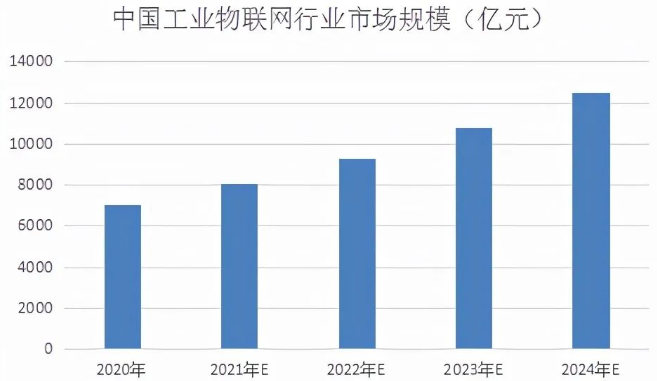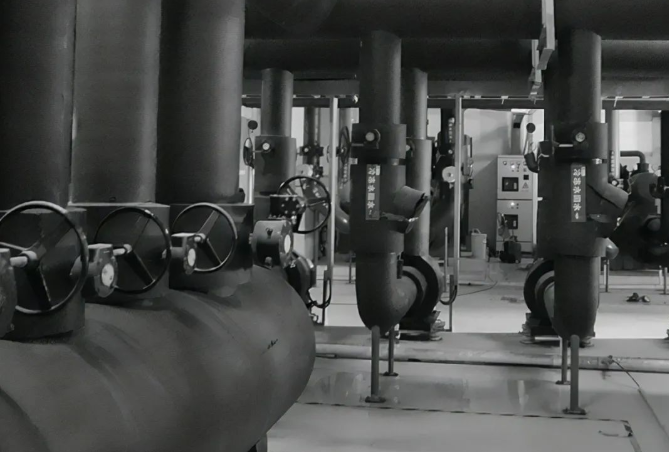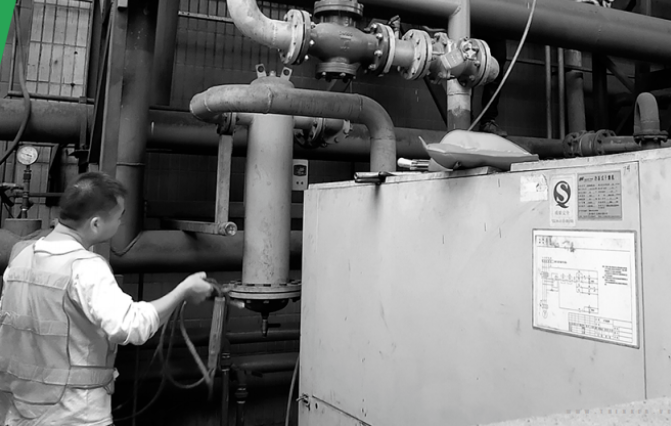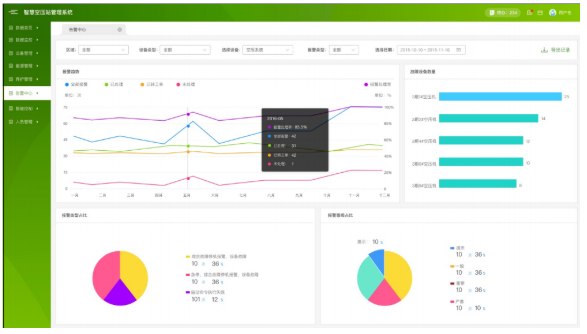The importance of industrial IoT
As the country continues to promote new infrastructure and digital economy, the Industrial Internet of Things is increasingly appearing in people’s vision. According to statistical data, the market size of China’s industrial Internet of Things industry will exceed 800 billion yuan in 2021, reaching 806 billion yuan. According to the national planning goals and the current development trend of China’s industrial Internet of Things, the scale of my country’s industrial Internet of Things industry will further increase in the future, and the growth rate of the industry market size will gradually increase. It is expected that the market size of China’s industrial Internet of Things industry will exceed one trillion yuan by 2023, and it is predicted that the market size of China’s industrial Internet industry will grow to 1.25 trillion yuan in 2024. The prospects for my country’s industrial Internet industry are very optimistic.

Chinese companies have launched many industrial IoT application practices. It is worth noting that although nearly 60% of Chinese corporate executives surveyed said they have formulated a development strategy for the Internet of Things, only 40% said they have made relevant investments. This may be related to the relatively large initial investment in the Industrial Internet of Things, and the actual effect is unknown. Therefore, today this article will use a practical case of intelligent transformation of air compressor rooms to talk about how the Industrial Internet of Things can help factories reduce costs and increase efficiency.

An air compressor is an air compressor that can produce high-pressure air for some equipment in the industry that requires high-pressure air of 0.4-1.0MPa, such as cleaning machines, various pneumatic measuring instruments, etc. The electric energy consumption of air compressor systems accounts for about 8 to 10% of industrial energy consumption. The national air compressor electricity consumption is about 226 billion kW·h/a, of which effective energy consumption accounts for only 66%, and the remaining 34% of energy (about 768.4 Billions of kW·h/a) are wasted.

The shortcomings of traditional air compressor rooms can be summarized as follows:
1. High labor costs
A traditional air compressor station consists of N compressors. The starting, stopping and status monitoring of air compressors in air compressor stations rely on the management of on-duty personnel at the air compressor station, which has high human resource costs.
Moreover, in maintenance management, if manual regular maintenance and on-site inspection are used to troubleshoot the air compressor afterwards, it is time-consuming and labor-intensive, and there is a lag in troubleshooting afterwards, hindering production and causing economic losses. Once equipment failure occurs, excessive reliance on equipment service providers to come to solve the problem will delay production and cause a waste of time and money.
2. High energy consumption cost
When manually on duty, the actual gas demand at the end is unknown. To ensure gas consumption, it is usually necessary to turn on more air compressors. However, the demand for air at the end fluctuates. When the amount of air used is small, the equipment will idle or be forced to release pressure, resulting in a waste of energy consumption.
In addition, manual meter reading has poor timeliness and accuracy, and there is no data analysis. Pipe leaks, excessive pressure losses in the dryer, etc. are a waste of time and cannot be judged.
3. Low equipment efficiency
In the case of single machine operation, production needs can be met by turning on the machine on demand to achieve constant gas consumption. However, when multiple units are running in parallel, there are situations where the size and power of the equipment are different, and the gas consumption and gas consumption periods in different production workshops are inconsistent, which affects the entire gas supply. The station has put forward higher requirements for scientific dispatching of power on and off, meter reading, energy saving, and power consumption.
Without reasonable and scientific matching and planning, the expected energy-saving effect cannot be achieved: for example, post-processing equipment such as first-level energy-efficiency air compressors and cold dryers are used, but the energy-saving effect after operation does not meet the expectations.
4. Data management is not timely
Relying on manual statistics of gas and electricity consumption reports by equipment managers is time-consuming and labor-intensive, and there is a certain lag. Enterprise operators cannot make management decisions in a timely manner based on electricity consumption and gas production reports. For example, there is data lag in daily, weekly, and monthly data reports, and each workshop needs to be independently calculated, so the data is not unified and meter reading is inconvenient.
Building a digital air compressor station system based on Internet of Things technology will make the air compressor station digital and intelligent:
1. Avoid personnel waste
Station visualization: 100% restore the overall situation of the air compressor station through configuration, including but not limited to real-time data monitoring and real-time abnormal alarms of air compressors, dryers, filters, valves, dew point meters, electricity meters, flow meters and other equipment. , to achieve unmanned management of the equipment, all required parameters of the air compressor will be displayed digitally in real time.
Planned configuration: Automatically start and stop the equipment by setting the planned time, ensuring gas consumption as planned, eliminating the need for personnel to perform on-site startup operations.
2. Intelligent equipment management
Timely maintenance: Customize the maintenance reminder time. The system will calculate and remind maintenance items based on the last maintenance time and equipment operating time. Perform timely maintenance, choose maintenance items reasonably, and avoid excessive maintenance.
Intelligent control: Through precise strategies, the equipment is reasonably controlled to avoid waste of energy consumption. It also has a certain protective effect on the life of the equipment itself.
3. Real-time data analysis
Data perception: On the homepage, you can intuitively see the gas-to-electricity ratio and unit energy consumption of the station.
Data overview: View detailed parameters of any device with one click.
Historical traceability: All parameters can be viewed at the granularity of year, month, day, hour, minute and second, with corresponding curves, and one-click table export is supported.
Energy management: Deeply dig into the abnormal points of equipment energy consumption to improve equipment efficiency to the optimal level.
Analysis report: Combining operation and maintenance, control, and operating effectiveness to obtain the same analysis report and analysis optimization plan

In addition, the system also has an alarm center that can record historical faults, analyze fault causes, locate problems, and eliminate hidden dangers.
Resuma
All in all, the digital air compressor station system makes the air compressor station work safer and more efficiently, and most importantly, it can also reduce costs and increase efficiency. Through the detected real-time data, different actions will be automatically triggered, such as controlling the number of operating air compressors and ensuring low-pressure operation of air compressors to avoid wasted energy consumption. It is understood that after a large factory used this system, although it invested several million in the initial transformation, the cost saved in one year was “recovered”, and it will continue to save several million every year after that. Such an investment Buffett I was a little moved when I saw it.
Through this practical example, I believe everyone will understand why the country has been advocating digital and intelligent transformation of enterprises. In the context of carbon neutrality, enterprises’ digital and intelligent transformation can not only help environmental protection, but also make the production management of their factories safer and more efficient, bringing them real economic benefits.